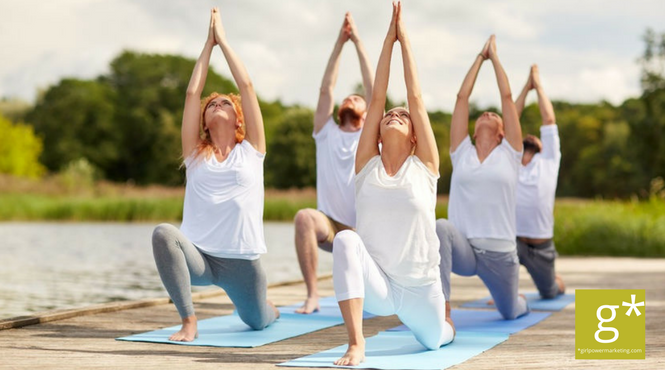What Marketers Should Know About Health and Wellness Trends of 2017

Heath and wellness is a way of life and a rich opportunity for brands. The global wellness economy was $3.7 trillion in 2016 and is expected to grow by 17% over the next five years.
Now that we’re firmly in the second quarter of 2017, we can point to several health and wellness trends that have emerged. Many of these trends vary by age and are often influenced by the environment and community of consumers, so understanding your buyers is more important than ever. Whether it’s massages at the airport, gluten-free beauty products, or smart wearables, many consumer brands are now part of the health and wellness space by delivering comfort, wellness, or both.
Go Natural
Consumers are eschewing chemicals in favor of all-natural products. This spans the board, from the make-up they use to the supplements they take. Buyers are looking for products that they feel are safe for themselves and their families.
This trend has shown itself in consumers’ embrace of probiotics for gut health and their purchases of anti-inflammatories at the grocery story—such as ginger tea and turmeric lattes, or even their avoidance of inflammatory foods like gluten and dairy. They’re drinking kombucha instead of soda, smoothies instead of milkshakes, and eating zucchini noodles and spaghetti squash instead of pasta.
Fight the Fear
Consumers are seeking information about health and wellness that relies less on invoking fear and more on how being healthy makes us feel. Marketers should focus messaging on how products can improve the daily lives of consumers in order to strike the right note.
Popular diets, such as the paleo diet and plant-based diets, have resonated with so many consumers because they want to believe that a simple change in what they eat can also change how they look and feel.
Get Comfortable
Athleisure, or athletic clothing designed to wear anywhere—even the office, has gained a lot of ground this year. Instead of creating clothes that are acceptable only at the gym, big brands like Lululemon and Under Armor are designing comfortable clothes that can be worn behind a desk or on the tennis court.
The busier we get, the less time we have to exercise, so we need the ability to get moving any time we get the chance. This ability to move from boardroom to bicycle has made it easier for people to get and stay more active, so don’t expect this particular trend to slow down anytime soon.
The Age of Agelessness
More and more older consumers are embracing a youthful mindset. Faced with the challenges of aging, they’re seeking to redefine what it means to be 50, 60, and beyond. Their focus is more on having an ageless image and attitude through an active lifestyle, rather than looking younger. At the same time, Millennials are taking an active approach to staying young, with 40% using anti-aging products.
Stress Free Zone
Stress is an epidemic, and wellness retreats are the cure. Consumers love the idea of escaping the distractions that lead to debilitating stress. Wellness retreats offer the chance to cleanse their diet with healthy menus, develop new exercise programs, and to relax with natural beauty treatments.
In fact, these retreats are the embodiment of many of the trends of health and wellness today, including clean eating, experiencing new cultures, and the Millennial cry of “Treat yo’self.”
While the trends may change from year to year, one thing is abundantly clear: more and more consumers want to live a healthy lifestyle, and are willing to spend the money to do so. Marketers should aim to target their customers focused on health and wellness with a quality experience in 2017.
